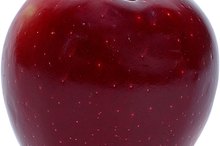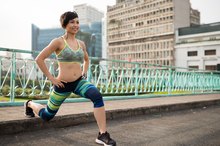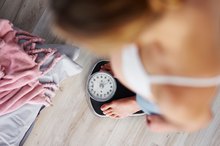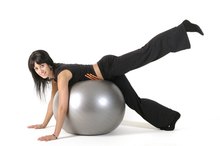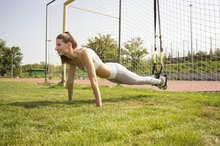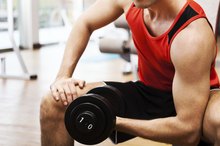Can Push-Ups Make You Fat?
Adding pushups to your routine won't make you fat, but, if you think doing a set gives the right to eat hundreds of extra calories per day -- you may pack on a few pounds. When included as part of a calisthenics routine, pushups can help you burn significant calories. Even with this burn, you need to monitor what you eat to avoid gaining weight.
Weight and Size Increases
Pushups, especially advanced variations such as one-armed, handstand, suspension and plyometric options, build muscle which can add girth to a slight upper body. This girth isn't a sign of fat gain, but muscle gain. The number on the scale may rise slightly, but this doesn't mean you are getting fat. Get your body fat percentage tested periodically by a certified personal trainer to see if you are making muscle gains or putting on fat.
Fat Gain
How to Change an Apple Shape to an Hourglass Figure
Learn More
If the changes in your body don't seem to be muscle, but a bit more spread around your midsection, your pushup routine is not to blame. You gain fat when you eat more calories than you burn. You can't use pushups to make up for regular indulgences in food filled with refined flours, added sugar and saturated or trans fats. Even healthy calories, from whole grains and essential fatty acids, can pile on the pounds if you eat too many of them. If you do pushups for 30 minutes straight -- a nearly impossible feat -- you'll burn just 167 calories if you weigh 155 pounds. You can easily replace these calories with 1 1/2 tablespoons of peanut butter, a large nonfat latte or two slices of whole grain bread. Using the pushups as an excuse to eat more calories will inevitably lead to weight gain.
Considerations
Pushups and other strength-training exercises can help you lose weight if you pair them with a healthy, calorie-controlled eating plan. If you've added pushups and other exercise and find you are gaining fat, examine your diet. Add up the calories you are eating in a day and compare that to what you burn. Burning 3,500 excess calories should lead to a 1-pound weight loss. If you are regularly exceeding your burn rate, you'll need to scale back on portions and choose less energy-dense foods. Leafy greens, low-fat dairy, lean protein and fresh fruit are foods low in calories and high in nutrients that can support weight management. Remember that weight loss and calorie burn is not an exact science and that the speed of your results depends on your body size, fitness level and body composition.
Keep Doing Pushups
How Much Weight Do You Lose If You Do 20 Sit-Ups a Day?
Learn More
Since pushups are unlikely the cause of any fat gain, keep them as part of your regular strength-training routine to help improve your overall body composition. In addition to building muscle in the chest, triceps and shoulders, this classic boot camp move works the rectus abdominus, the front sheath of muscles that forms your six-pack, and the obliques at the sides of your abdominals as stabilizers. Pushups also activate your biceps, quadriceps and erector spinae along your spine. Regular inclusion of pushups into your exercise routine helps you measure your strength relative to your body weight and builds stability, power and muscle tone -- they don't add fat to your body.
Related Articles
References
- American Council on Exercise: Push-Up
- Harvard Health Publications: Calories Burned in 30 Minutes for People of Three Different Weights
- Fox News: Are You Doing Pushups Wrong?
- Men's Health: 7 Smart Pushup Improvements
- Shape: 7 Stubborn Fitness Myths
- Centers for Disease Control and Prevention: Losing Weight
Writer Bio
Andrea Cespedes is a professionally trained chef who has focused studies in nutrition. With more than 20 years of experience in the fitness industry, she coaches cycling and running and teaches Pilates and yoga. She is an American Council on Exercise-certified personal trainer, RYT-200 and has degrees from Princeton and Columbia University.
